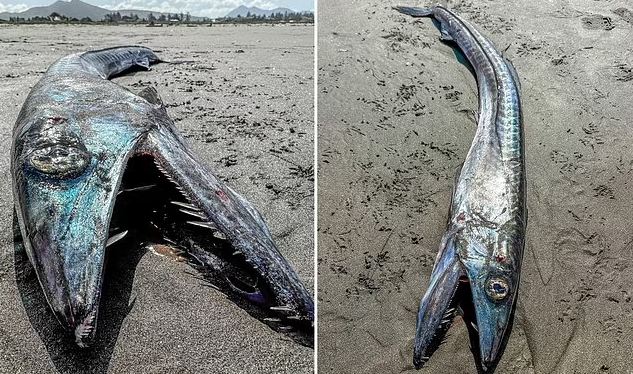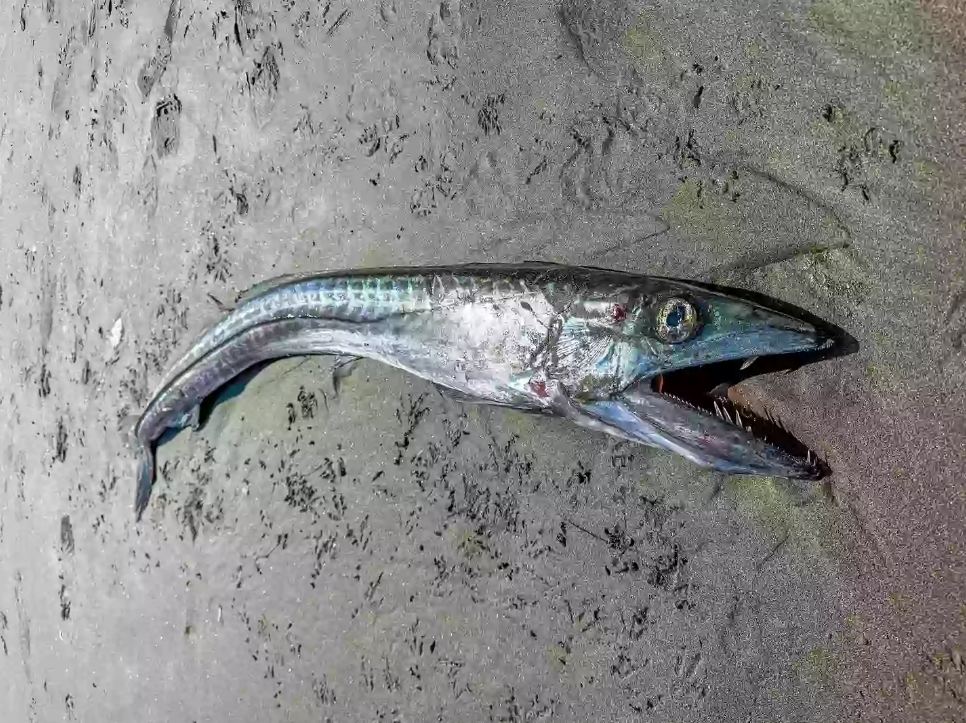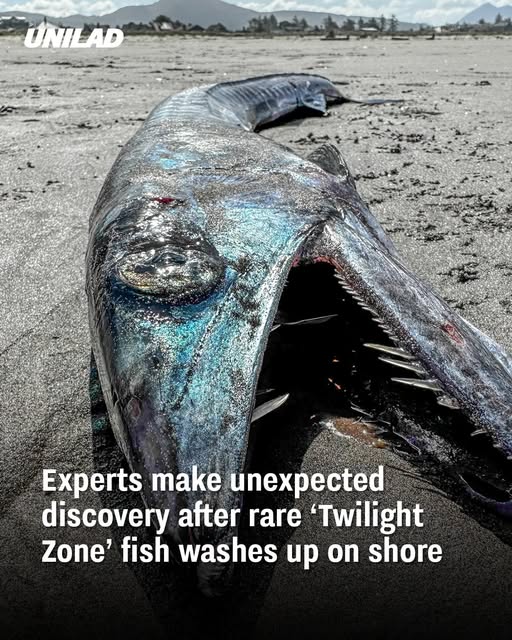It’s not every day that a creature from the ocean’s deepest, darkest regions appears on a public beach. Yet, this is precisely what happened recently along the coast of Oregon, causing a stir among locals and marine experts alike. Staff from the Seaside Aquarium, self-described “fish nerds,” were quick to respond when a visitor to their gift shop showed them a photo of a bizarre, frightening fish found washed ashore.
The photo revealed a massive, sharp-toothed creature with a long, menacing mouth — an unmistakable sight for those familiar with deep-sea fauna. Tiffany Boothe, the assistant manager at the aquarium, immediately recognized the importance of the find. “When he showed us the picture, it was such a fresh, great specimen that we were like, ‘Sweet, we’re gonna go pick it up,'” she recalled.

Identifying the Mysterious Creature
The fish, measuring an impressive five feet in length, was identified as a longnose lancetfish. Typically, these elusive creatures inhabit depths greater than a mile beneath the ocean surface, making any encounter with them a rare event. According to the National Oceanographic and Atmospheric Administration (NOAA), longnose lancetfish prefer warmer waters but have been known to travel as far north as the Bering Sea. Despite their intimidating appearance, sightings near the Oregon coast are extremely uncommon, with only about half a dozen reported annually in the area. Boothe added, “It doesn’t look like a very friendly fish. If I saw that fish alive, I wouldn’t touch it.”
A Closer Look at the Longnose Lancetfish
Longnose lancetfish are peculiar creatures. They possess gelatinous flesh that birds, especially seagulls, find irresistible. This makes finding an intact specimen difficult, as scavengers often damage them before researchers can study them. Fortunately, the specimen found in Oregon was remarkably well-preserved, offering a rare opportunity for scientific examination. One of the most fascinating aspects of the longnose lancetfish is its extremely slow digestive system. This allows scientists to learn a great deal about the animal’s diet — and, by extension, the ecosystem it inhabits — by analyzing the contents of its stomach. When the Seaside Aquarium staff investigated, they discovered a grim but scientifically valuable treasure: several squid and octopus remains, along with at least three whole fish.
What the Discovery Means for Science
By examining the stomach contents of deep-sea creatures like the longnose lancetfish, researchers can better understand the marine food web and monitor how it changes over time. Such studies can reveal the effects of environmental events like El Niño and La Niña on ocean life. Interestingly, the longnose lancetfish is not a picky eater. They are known to consume over 90 different species of marine life — including, disturbingly, pieces of plastic and even other lancetfish. This behavior highlights not only their adaptability but also the serious pollution issues facing the world’s oceans.
The Twilight Zone Predator
Longnose lancetfish belong to the genus Alepisaurus, which translates to “scaleless lizard,” a name that perfectly suits their prehistoric appearance. These “Twilight Zone” fish, named for the deep-sea region they inhabit, can grow up to seven feet long and weigh around 20 pounds. The Seaside Aquarium shared their findings with the public on social media, noting the fish’s resemblance to a barracuda but with distinct features such as large, luminous eyes, fang-like teeth, and a serpent-like body. “Little is known about the longnose lancetfish,” they wrote, “but we know they range from the southern Bering Sea to Chile and can occupy waters as deep as 6,000 feet.”

A Rare Glimpse Into the Unknown
This rare discovery offers a valuable glimpse into the little-known world of deep-sea creatures. It serves as a reminder of how much remains to be explored beneath the ocean’s surface and how important it is to protect these mysterious ecosystems from threats like pollution and climate change.
Conclusion
While the longnose lancetfish may look terrifying, its unexpected arrival on the Oregon shore has given scientists and the public alike a rare opportunity to connect with the deep ocean’s strange and fascinating life.

















